While it’s nice to have the Windows Media player available for use whenever and pretty much wherever you want it, due to it coming with Windows, using it isn’t as easy as it should be, especially for those people that don’t have an iPod or aren’t used to using playlists. Fortunately, learning to create and use playlists with the Media player isn’t as hard as it looks.
To get started, first run Windows Media Player; it should be listed under your programs when you click on the Start menu. Once it’s up and running, click Create playlist on the main toolbar:

Next, click Create Playlist on the drop-down menu, you should get:
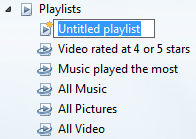
Type a name for your playlist; it’s best if it’s something short that makes sense to you, for example, “Rock n Roll.” This name is pretty clear; remember that you can create as many playlists as you like, so it’s good to give them names that you can relate to.
Press the Enter key when you’re done, and the new playlist will be created.
Next, in order for the playlist to have any use, it has to have some songs in it; to add songs first double click on the new playlist you just created; the right side of the screen should change to show you that is it now displaying the contents of your new playlist:
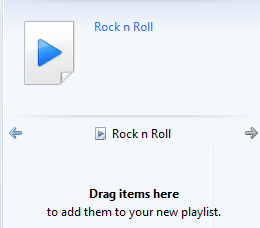
To add songs to your playlist, do as it says, and drag whatever songs Media Player has discovered exist on your computer; in most instances, unless you’ve created a new song library, they will all be listed under your Music library. To make them appear, double-click where it says Music:

Now, all you have to do is drag whatever songs fit your category from where they are shown in your Music library, to the right side of the screen; once you do that it should look something like this:
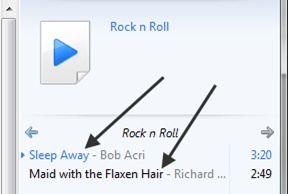
You can keep adding songs as long as you like. When you’re finished, click the Save list icon on the top right-hand side of your screen:
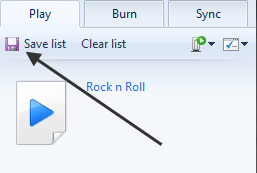
Once you have your playlist created, to make the songs in them play, all you have to do is click on the Playlist name whenever you’re in Media Player and the first song in the playlist will start playing, followed by all the rest of them.
If you want to change the order in which the songs in your playlist play, click on the List options icon:
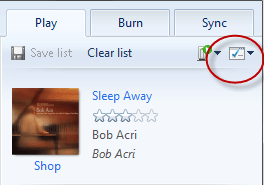
The Windows Media Player is both versatile and easy to use once you get the hang of how it’s all put together, and can be used to organize music, video, recorded television shows and even images.
To get started, first run Windows Media Player; it should be listed under your programs when you click on the Start menu. Once it’s up and running, click Create playlist on the main toolbar:

Next, click Create Playlist on the drop-down menu, you should get:

Type a name for your playlist; it’s best if it’s something short that makes sense to you, for example, “Rock n Roll.” This name is pretty clear; remember that you can create as many playlists as you like, so it’s good to give them names that you can relate to.
Press the Enter key when you’re done, and the new playlist will be created.
Next, in order for the playlist to have any use, it has to have some songs in it; to add songs first double click on the new playlist you just created; the right side of the screen should change to show you that is it now displaying the contents of your new playlist:

To add songs to your playlist, do as it says, and drag whatever songs Media Player has discovered exist on your computer; in most instances, unless you’ve created a new song library, they will all be listed under your Music library. To make them appear, double-click where it says Music:

Now, all you have to do is drag whatever songs fit your category from where they are shown in your Music library, to the right side of the screen; once you do that it should look something like this:

You can keep adding songs as long as you like. When you’re finished, click the Save list icon on the top right-hand side of your screen:
Once you have your playlist created, to make the songs in them play, all you have to do is click on the Playlist name whenever you’re in Media Player and the first song in the playlist will start playing, followed by all the rest of them.
If you want to change the order in which the songs in your playlist play, click on the List options icon:

The Windows Media Player is both versatile and easy to use once you get the hang of how it’s all put together, and can be used to organize music, video, recorded television shows and even images.


No comments:
Post a Comment